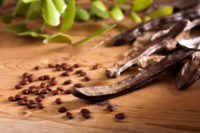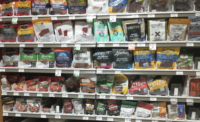Ensuring quality in the broad spectrum of meat and poultry products is no easy task.
The animal’s genetic traits, how it was raised, and what it was fed are all factors in finding the right binder/emulsifier recipe.
Get the ingredients wrong, and the end product can be substandard in terms of yields, texture, juiciness, and cost, says Wesley Osburn, associate professor of animal science and meat processing in the Department of Animal Science at Texas A&M University, in College Station.
Binders thicken and improve the texture of proteins, while emulsifiers prevent separation of product components to ensure consistency. Problems occur when processors mistakenly think that all binders or emulsifiers function in the same manner, “when in fact they are manufactured to provide different properties based on the product and/or, the process,” Osburn says.
Not using ingredients as directed by manufacturers also will impact product quality, he says, adding that the most appropriate binders or emulsifiers are dependent on the product’s unique specifications. A large-diameter emulsion-type product, for instance, may require both a binder and emulsifier to ensure that the meat proteins can entrap fat and added water and then retain the elements during thermal processing and chilling, Osburn notes.
In determining the most appropriate binders for their selections, meat and poultry processors should consider such factors as whether the item is injected, tumbled, or ground formed; if it is typically served hot or cold; and whether the product needs a firm bite or is softer and spongier, says Nesha Zalesny, technical consultant at IMR International, a San Diego-based market research and technical consulting firm and publisher of the Quarterly Review of Food Hydrocolloids.
An investment in good mixing equipment will help foster hydration by ensuring all proteins have the necessary ingredients, while proper training of operators will enable processors to recognize properly hydrated brine.
So many possibilities
Carrageenan, for example, is effective for binding injected or tumbled products, Zalesny says, noting that it is especially useful in cold cuts by increasing sliceability in deli meats and giving a firm bite to the finished product. A mixture of phosphate and starch is commonly injected into whole-muscle products, particularly in ready-to-eat rotisserie selections, she says. “These brine systems help the product retain moisture and deliver flavor.”
Brine choices for softer bites in-ground and formed products include phosphates, which can help retain flavor in reheated meat, and starches that support moisture retention, she says. Citrus and oat fiber are cleaner label alternative for moisture retention, Zalesny adds.
“These are especially useful in frozen meatballs or sausages where the product may be heated multiple times prior to consumption,” she says, adding that fibers “can help keep that meatball from becoming rubbery.” Most of the newer binding elements involve clean-label substances for texture, preservation, and sodium reduction, she says.
Injecting the appropriate brine in the most effective manner, meanwhile, is perhaps the major binding challenge facing meat and poultry processors, Zalesny says. “Proper hydration is key,” she notes. “An investment in good mixing equipment will help foster hydration by ensuring all proteins have the necessary ingredients, while proper training of operators will enable processors to recognize properly hydrated brine.”
It is important, however, for processors to first ensure they are getting the most out of the raw material before determining whether a binder or emulsifier is necessary, Osburn says. “Meat proteins are very functional as they can bind water, fat, and protein if activated by the addition of salt and, or, phosphates,” he says. “If the product is not meeting standards with respect to functionality, then binders or emulsifiers should be considered. But binders and emulsifiers are an added expense so the benefits must outweigh the cost of using these additives.”
Focus on the correct ingredient proportions
Operators also need to “overcome greediness” by not including excessive amounts of binders and emulsifiers in meat and poultry, says Norman Marriott, emeritus professor in the College of Agriculture and Life Sciences at Virginia Polytechnic Institute and State University (Virginia Tech), in Blacksburg. Replacing meat with unnecessary binders and emulsifiers can potentially cut processor costs by enabling operators to make products at a particular weight while reducing the amount of higher-priced meat in the formulation, he says.
“Binders can bind more water to the product, which is cheaper than the raw materials,” Marriott says. “But you can end up with an inferior product.” He offers examples: Too much phosphate can result in a salty taste or flavor degradation, while excessive soy protein can generate a soybean taste.
Not incorporating enough of the substances also may affect quality. Marriott says underutilizing binders can make meat more difficult to slice or cause it to crumble or break apart. A shortage of emulsifiers, meanwhile, can prevent the encapsulation of fat in frankfurters and other processed meats, “resulting in an inferior or unacceptable selection,” he says.
Processors can pinpoint the most effective types and quantities of binders and emulsifiers to incorporate in specific products through trial and error and by consulting with substance suppliers, Marriott says. Running test batches of product prior to production also is critical for assessing the ability of a binder or emulsifier to provide the necessary functionality or attributes, Osburn says.




Report Abusive Comment